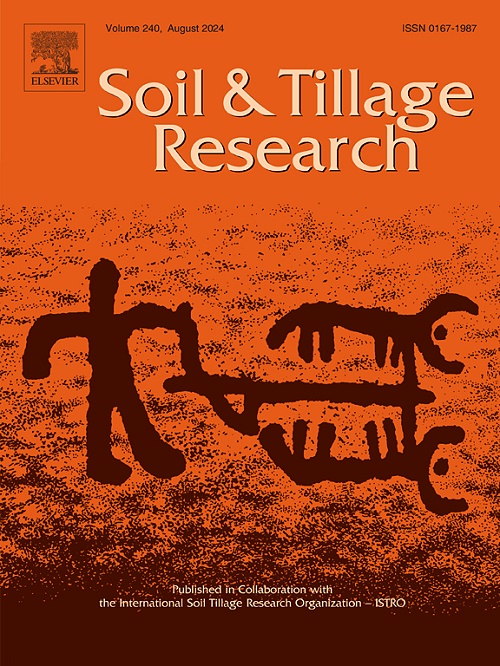Nitrogen-rich roots regulate microbial- and plant-derived carbon in alkali-saline soil under land-use conversions in the Songnen Plain
IF 6.1
1区 农林科学
Q1 SOIL SCIENCE
引用次数: 0
Abstract
The distributions and influencing factors of microbial- and plant-derived carbon (C) in saline-alkali soil under land use managements in the Songnen Plain have been ignored. Therefore, a 11-year field experiment was used to explore the microbial- and plant-derived C, as well as their relationships with plant residue inputs, soil chemical properties, and microbial biomass (phospholipid fatty acids, PLFAs) in the top 0–20 cm of soil. The experiment included four treatments: maize cropland (MC), alfalfa grassland (AG), Leymus chinensis grassland (LG), and natural restored grassland (RG), each replicated thrice. Results showed that the contents of microbial- and plant-derived C in AG, LG, and RG plots were significantly higher than those in the MC plot. The content of microbial-derived C in the RG plot was 73.60 % higher than that in the AG plot and 10.28 % higher than that in the LG plot (p < 0.05). The content of plant-derived C in the LG plot was 55.23 % and 29.43 % higher than that in the AG plot and RG plot, respectively (p < 0.05). The lowest ratios of (Ad/Al)v and (Ad/Al)s were observed in the LG plot (p < 0.05). The Pearson’s analysis, structural equation models, and random forest models revealed that soil available nitrogen, caused by nitrogen content in root and root inputs, primarily explained the variation in microbial-derived C. The increase in fungal-PLFAs, caused by aboveground inputs, positively correlated with microbial-derived C. The root inputs directly or indirectly caused the variation of plant-derived C by influencing the G+/G- ratio. In conclusion, converting cropland to natural restored grassland resulted in the highest microbial-derived C, due to higher fungal biomass and lower soil available nitrogen, which was more conducive to SOC sequestration in alkali-saline soil in the Songnen Plain.
求助全文
约1分钟内获得全文
求助全文
来源期刊

Soil & Tillage Research
农林科学-土壤科学
CiteScore
13.00
自引率
6.20%
发文量
266
审稿时长
5 months
期刊介绍:
Soil & Tillage Research examines the physical, chemical and biological changes in the soil caused by tillage and field traffic. Manuscripts will be considered on aspects of soil science, physics, technology, mechanization and applied engineering for a sustainable balance among productivity, environmental quality and profitability. The following are examples of suitable topics within the scope of the journal of Soil and Tillage Research:
The agricultural and biosystems engineering associated with tillage (including no-tillage, reduced-tillage and direct drilling), irrigation and drainage, crops and crop rotations, fertilization, rehabilitation of mine spoils and processes used to modify soils. Soil change effects on establishment and yield of crops, growth of plants and roots, structure and erosion of soil, cycling of carbon and nutrients, greenhouse gas emissions, leaching, runoff and other processes that affect environmental quality. Characterization or modeling of tillage and field traffic responses, soil, climate, or topographic effects, soil deformation processes, tillage tools, traction devices, energy requirements, economics, surface and subsurface water quality effects, tillage effects on weed, pest and disease control, and their interactions.
 求助内容:
求助内容: 应助结果提醒方式:
应助结果提醒方式:


